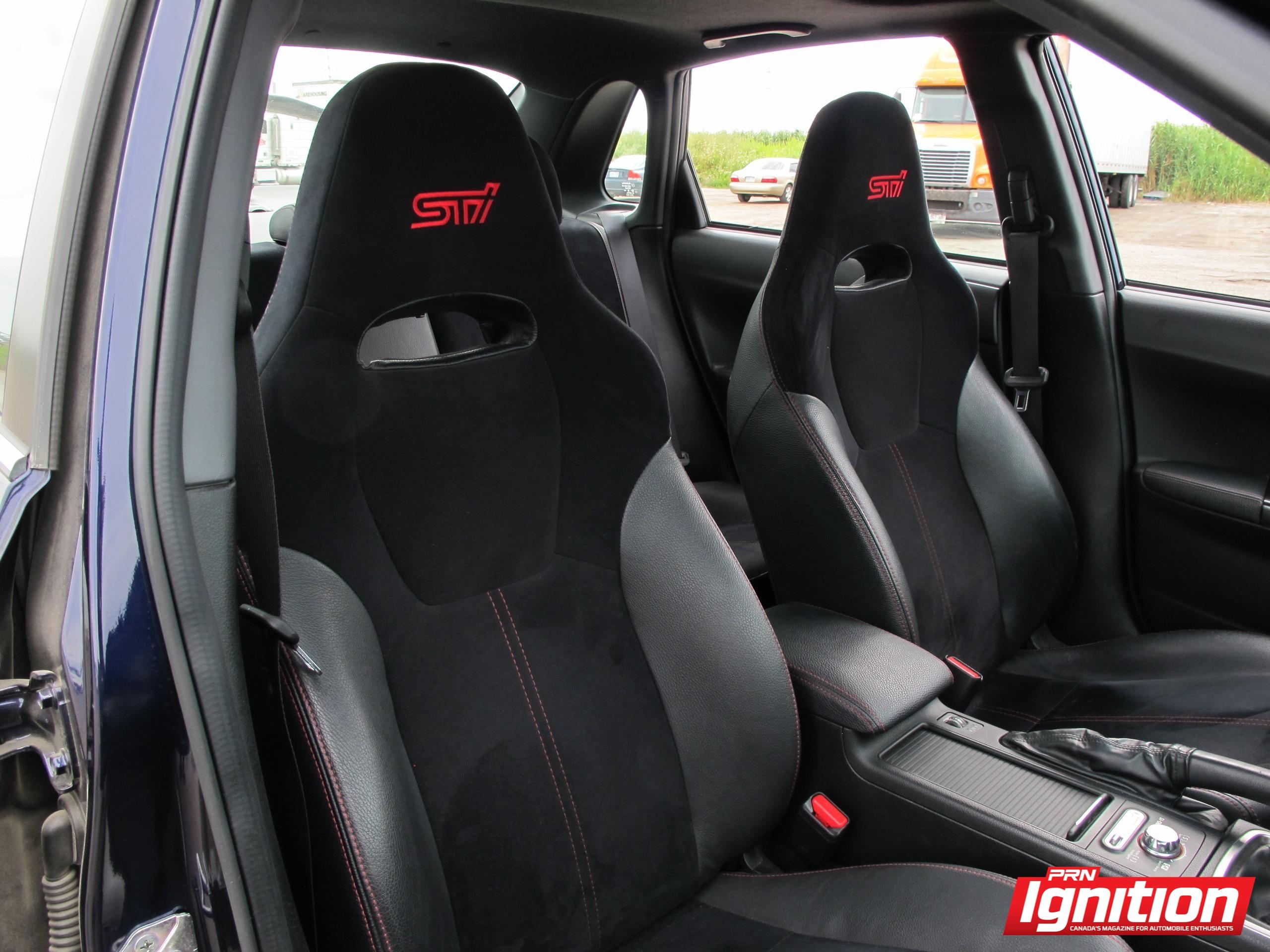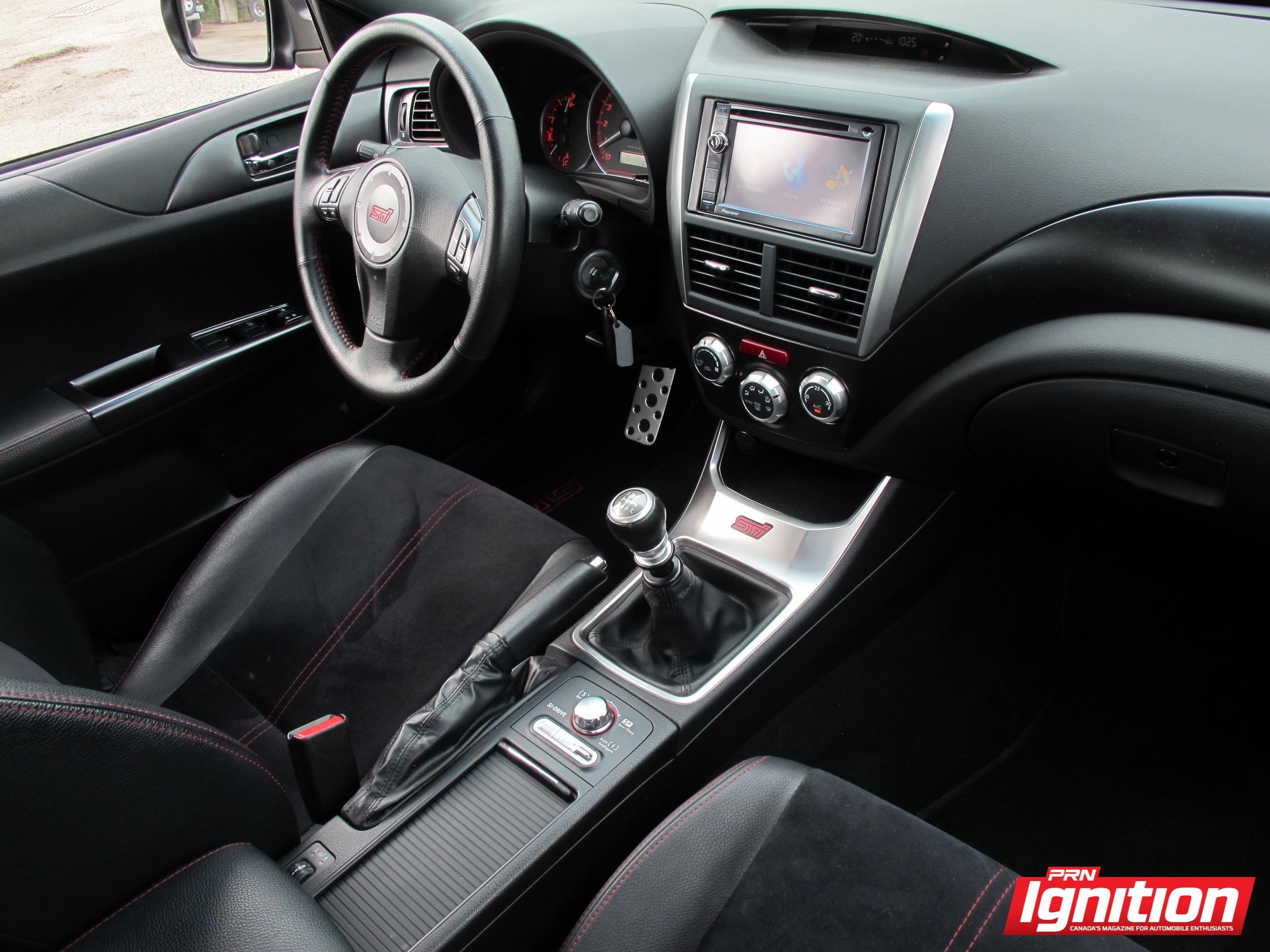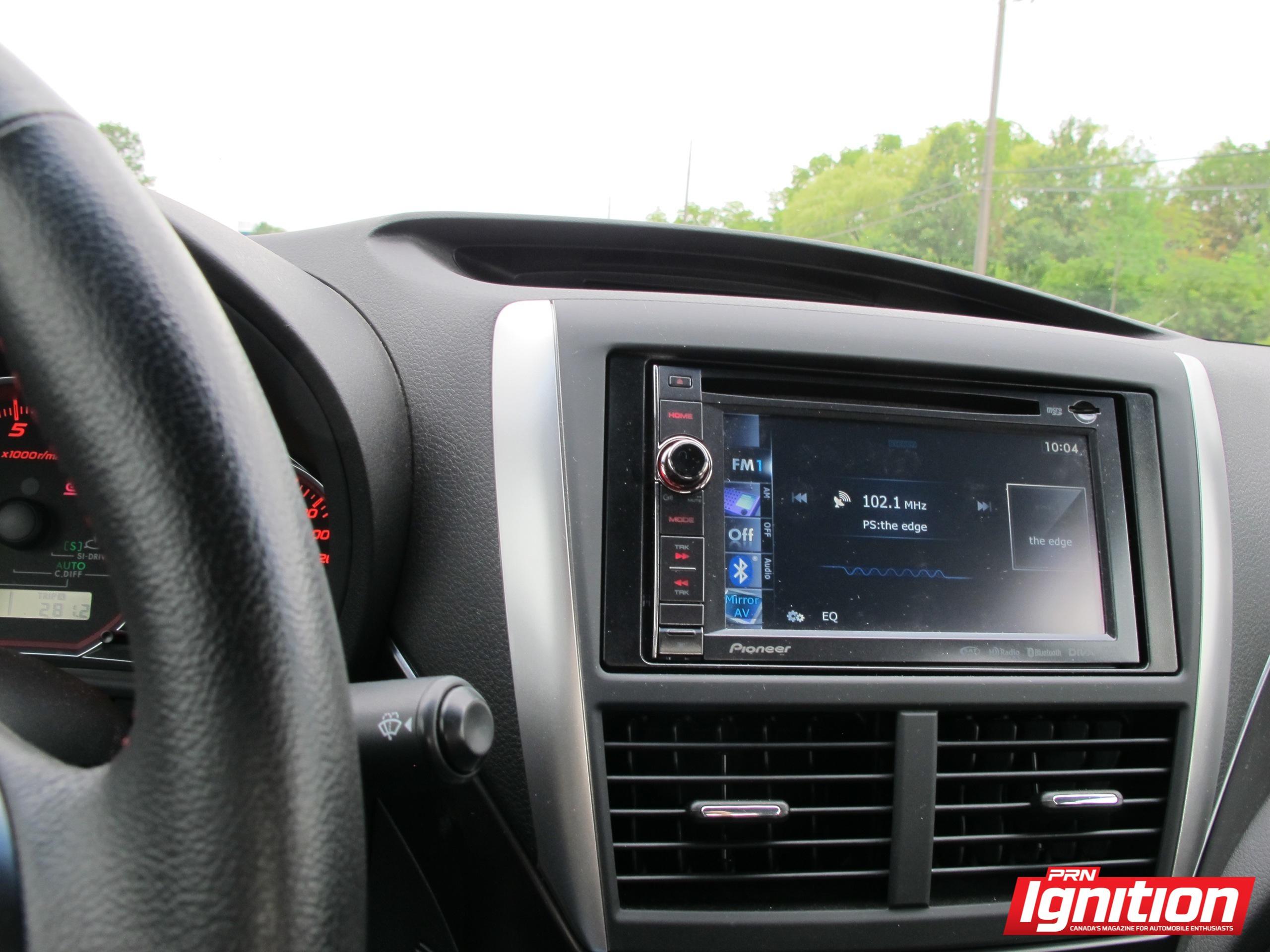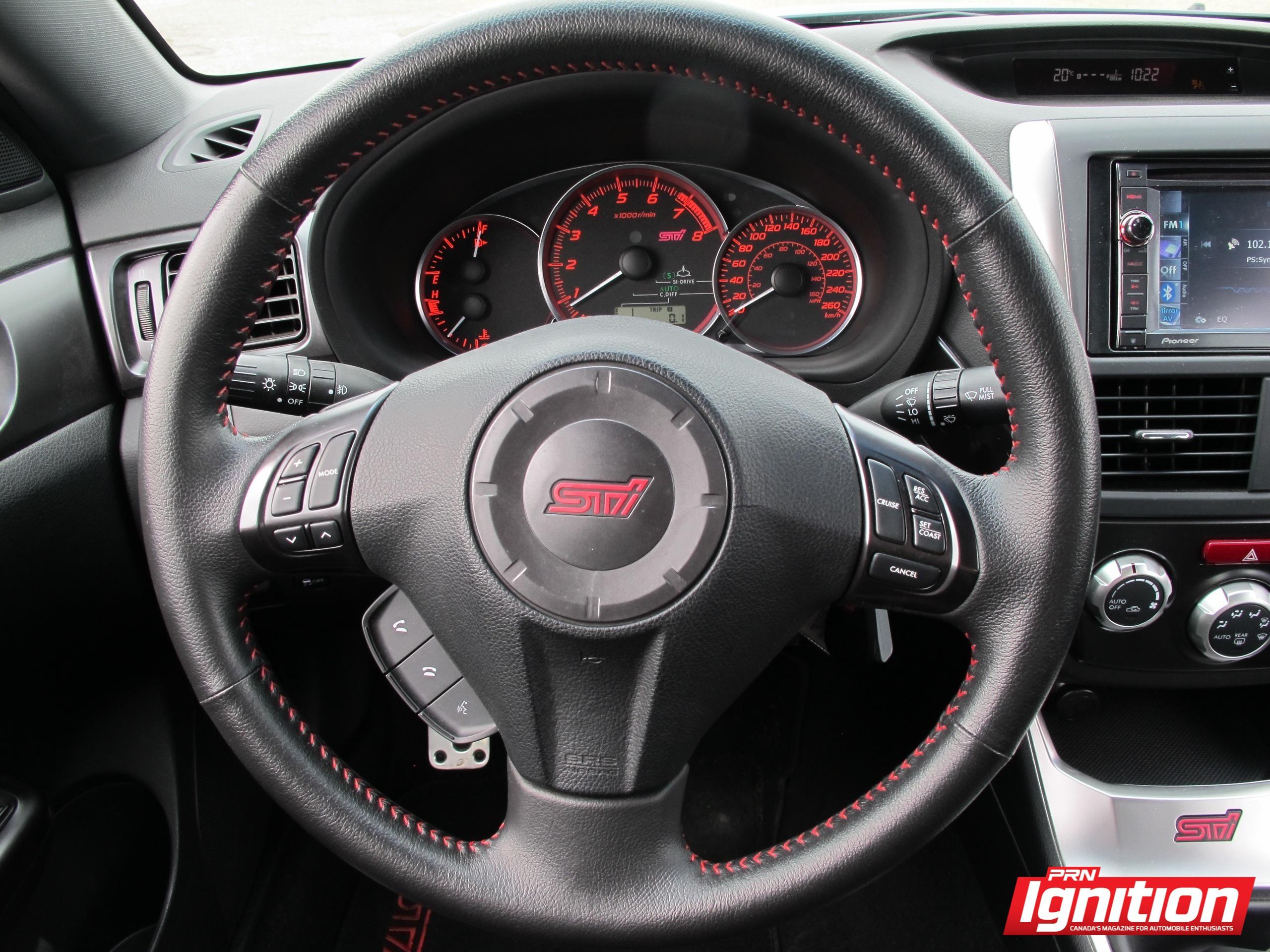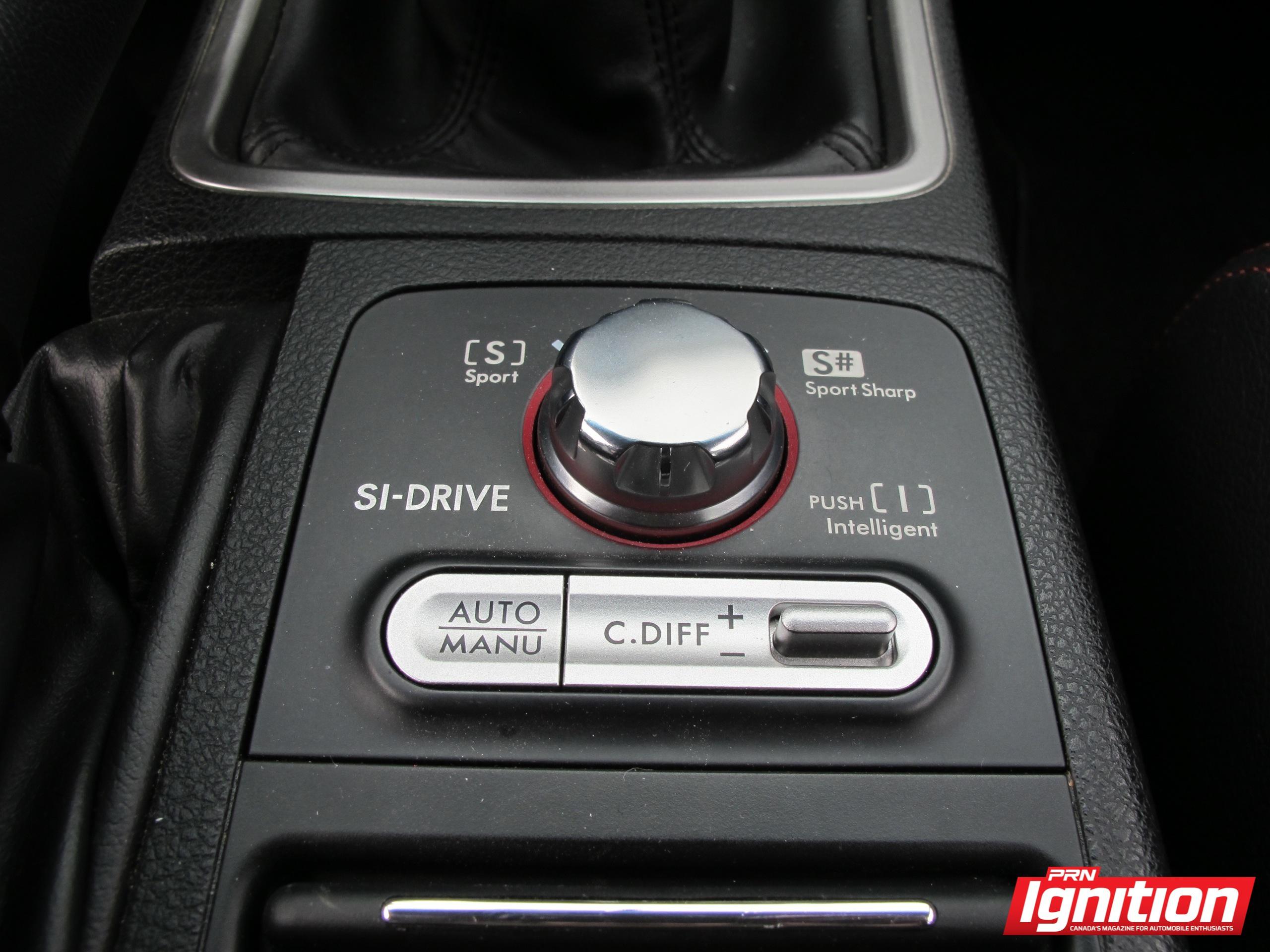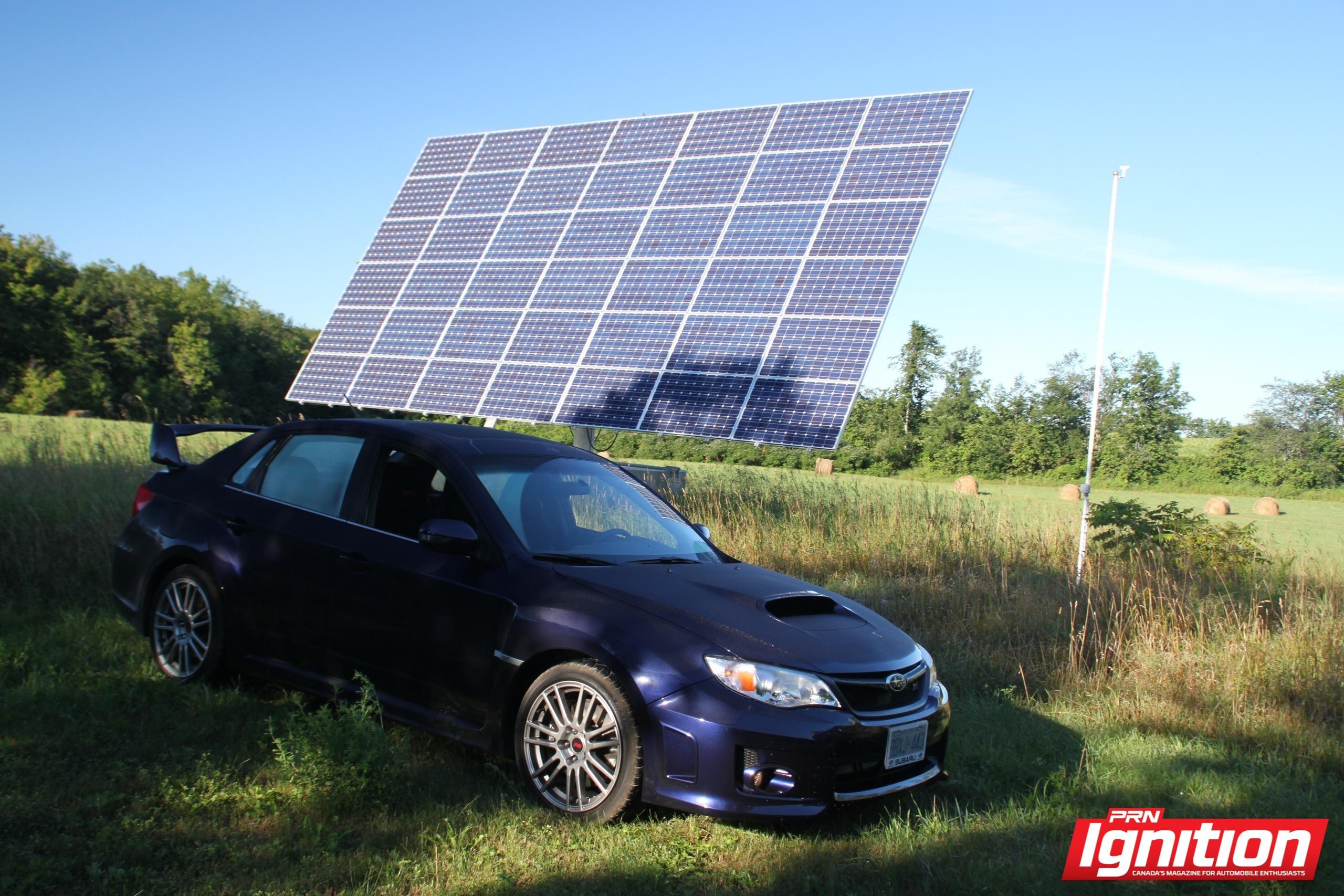
I've had an insatiable urge to get completely sideways while driving a Subaru STI since watching Ken Block's Gymkhana Practice video on YouTube. Five long years have passed, Subaru launched a new model and I even met Mr. Block – who now drives a Ford of course – in person before that would happen. But it did happen, and it felt good. Real good. So good in fact that I have this burning desire to go and do it again.
Check out our video and read the full review below.
The WRX STI punches well above its price, and there are few cars that can do the things it can for under 40 grand. Its turbocharged and intercooled 2.5-litre Boxer four transmits 305 hp and 290 lb-ft of torque to the road via Subaru's symmetrical full-time AWD system.
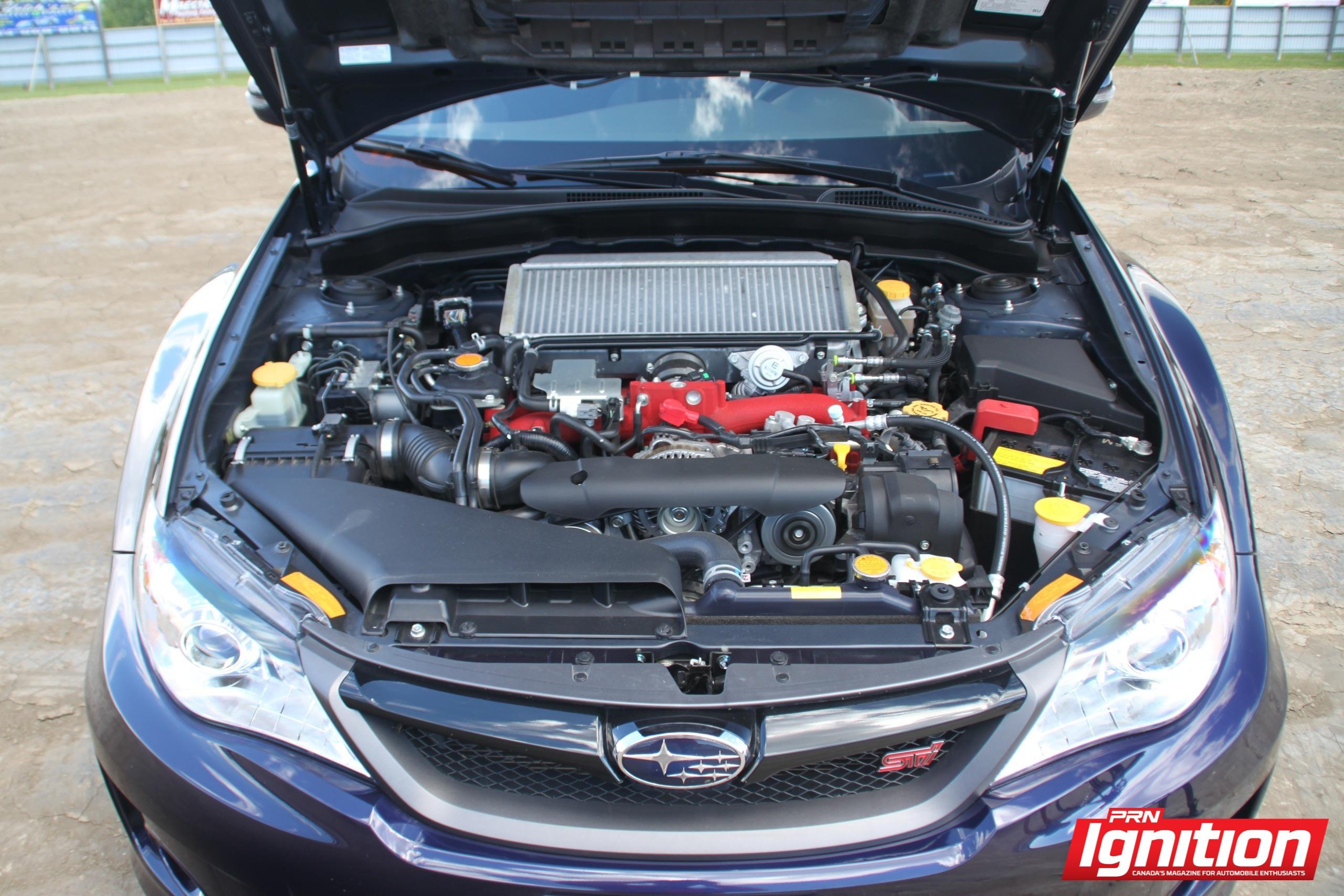
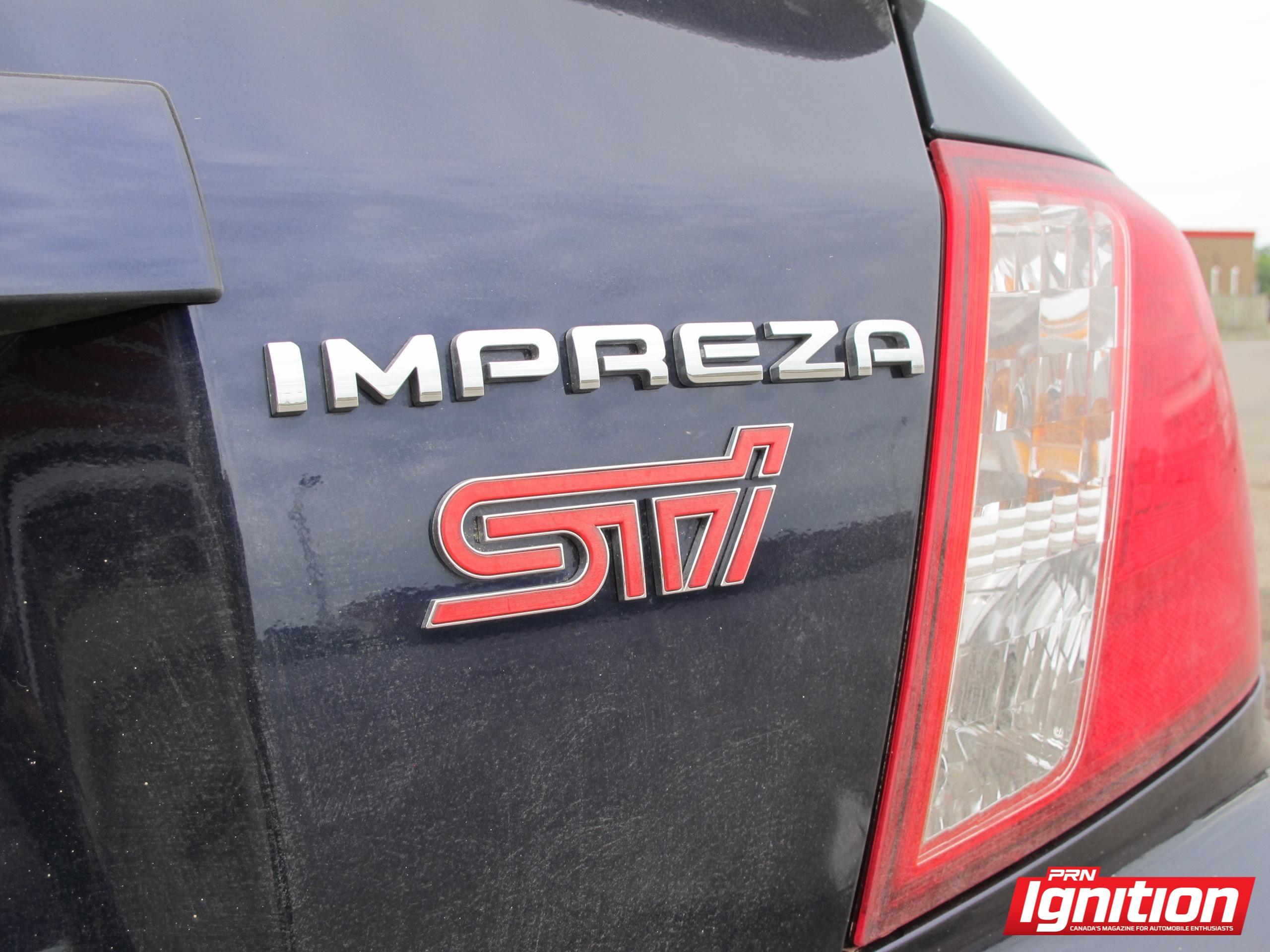
That AWD system does come at the expense of some weight, but the car's low centre of gravity keeps it planted on any surface that isn't loose or wet. A high-performance suspension, sticky Dunlop summer tires, 18-inch Enkei wheels and Brembo brakes only further the argument that you don't need to spend 100 grand to get world class performance.
Driving that point home are Subaru's Intelligent Drive (a.k.a SI-Drive) and Multi-Mode Driver Controlled Centre Differential (DCCD) systems. The latter allows the driver to set an initial LSD torque to match the road surface conditions, driving conditions and driving style. I'll get to both momentarily.
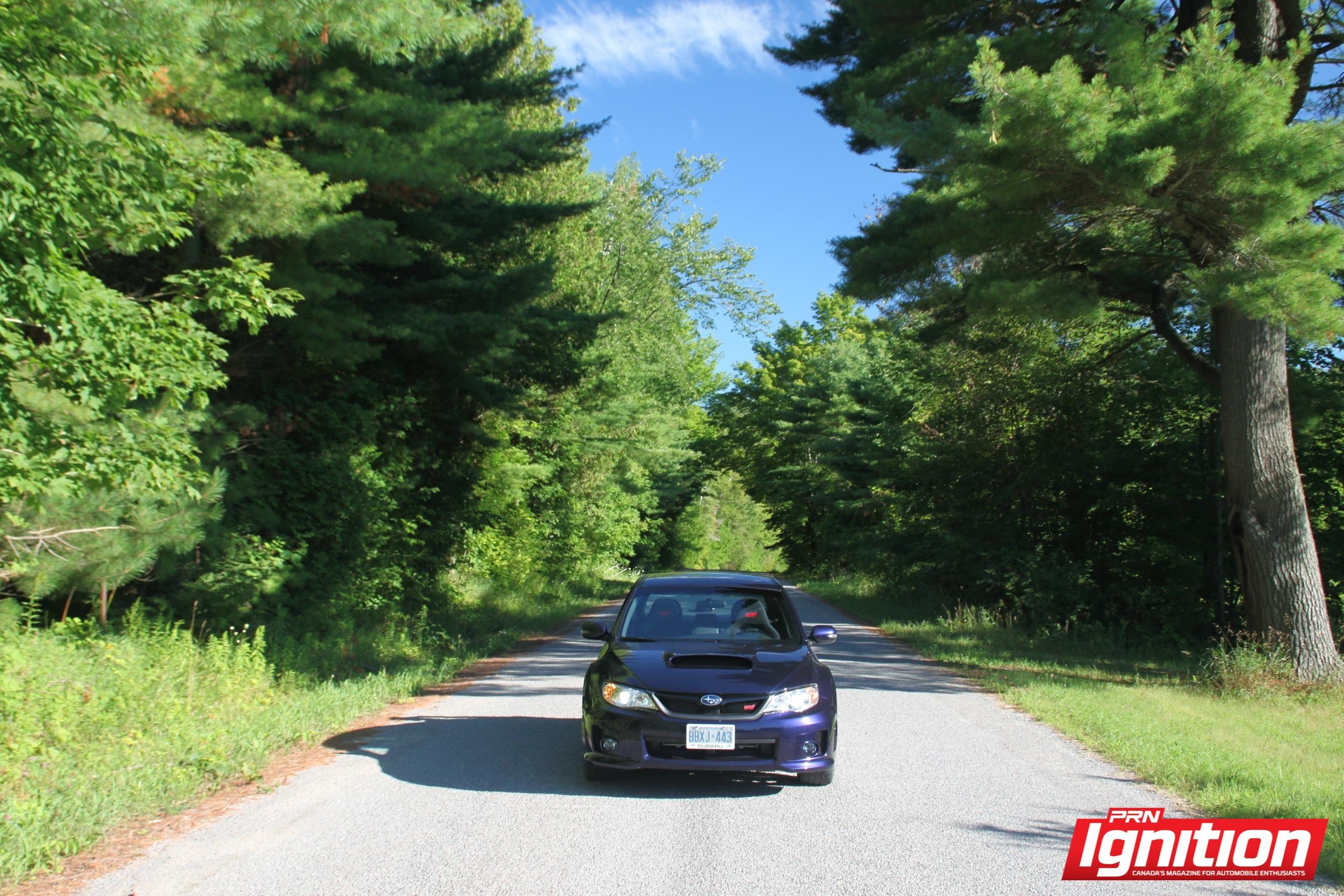
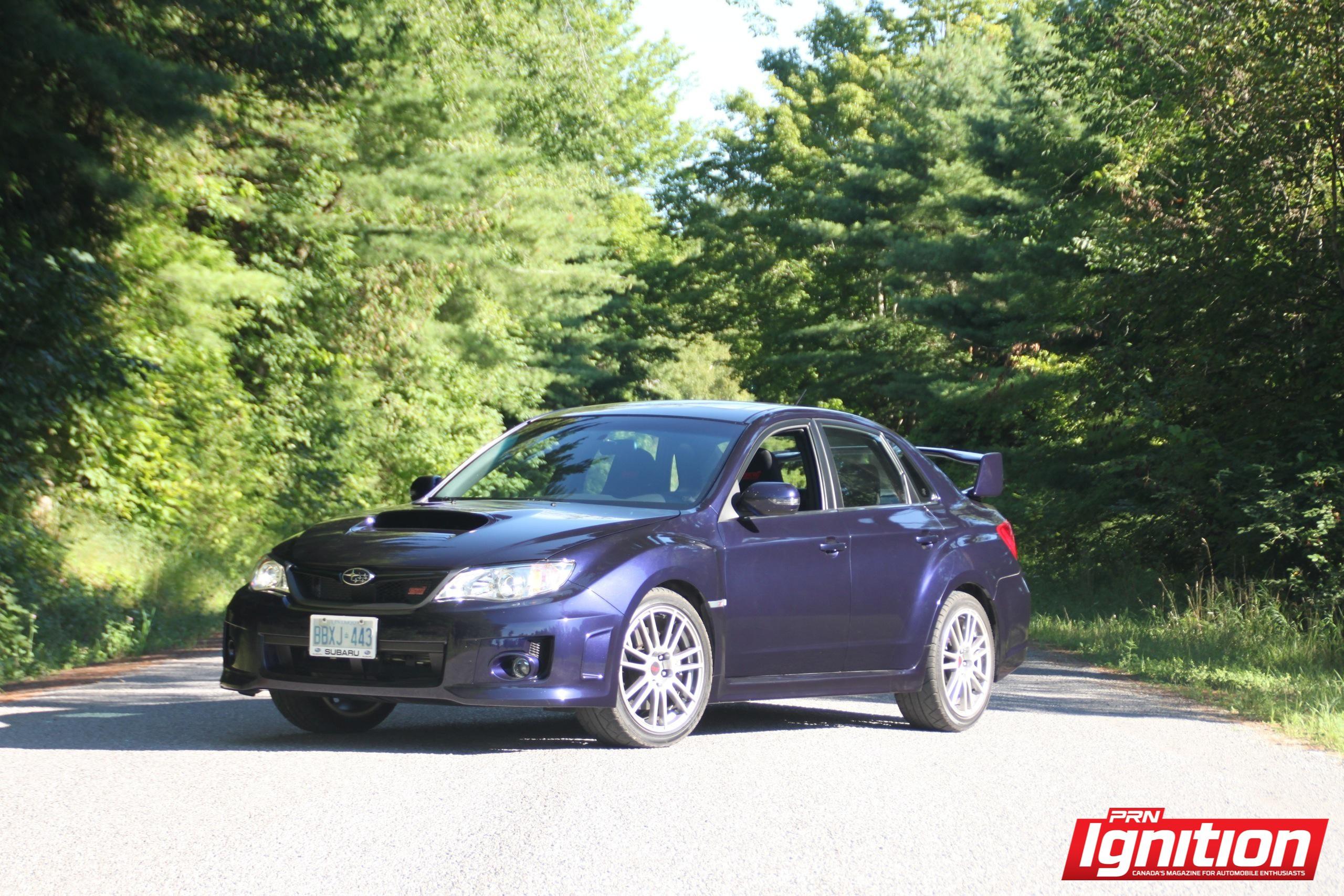
This is a 2013 model year STI, though it is practically identical to the 2014 models. (There is a new trim called Tsurugi that is available exclusively in Canada.) In either case, the STI is a driver's car! It's not offered with an automatic or CVT and there are no paddle shifters. It comes with a six-speed close-ratio manual transmission thank you very much, and hopefully that will always be the case.
It comes with rally-style sport seats that are covered largely in non-slip black Alcantara; and, the rest of the interior has a minimalist feel to it. The centre stack has only a few knobs and vents for climate, a double-DIN in-dash Pioneer head unit and a simple multi-informational display above that.
Bluetooth technology makes for safe operation. The driver gets a padded centre armrest for comfort and, for convenience, a perfectly-weighted multifunction steering wheel and an easy-to-read (and sharp-looking) instrument cluster. The tachometer properly located in the middle, which is also where the DCCD and SI-Drive display is located.
Introduced in 2011, the wider body sedan (and hatch) feels more glued to the road. Like most FWD and AWD cars, it has a tendency to understeer when it's being pushed hard. That can be tamed, however, with a modicum of right foot restraint and some technological wizardry.
The exhaust note is more tame / less boomy than past iterations of the STI. It is a civilized street car that's suitable for grocery runs and other errands, but it is quite a serious sports car too. In the hands of an experienced driver it's a perfectly awesome road course racer, and it becomes quite the wild thing when used as a rally car.
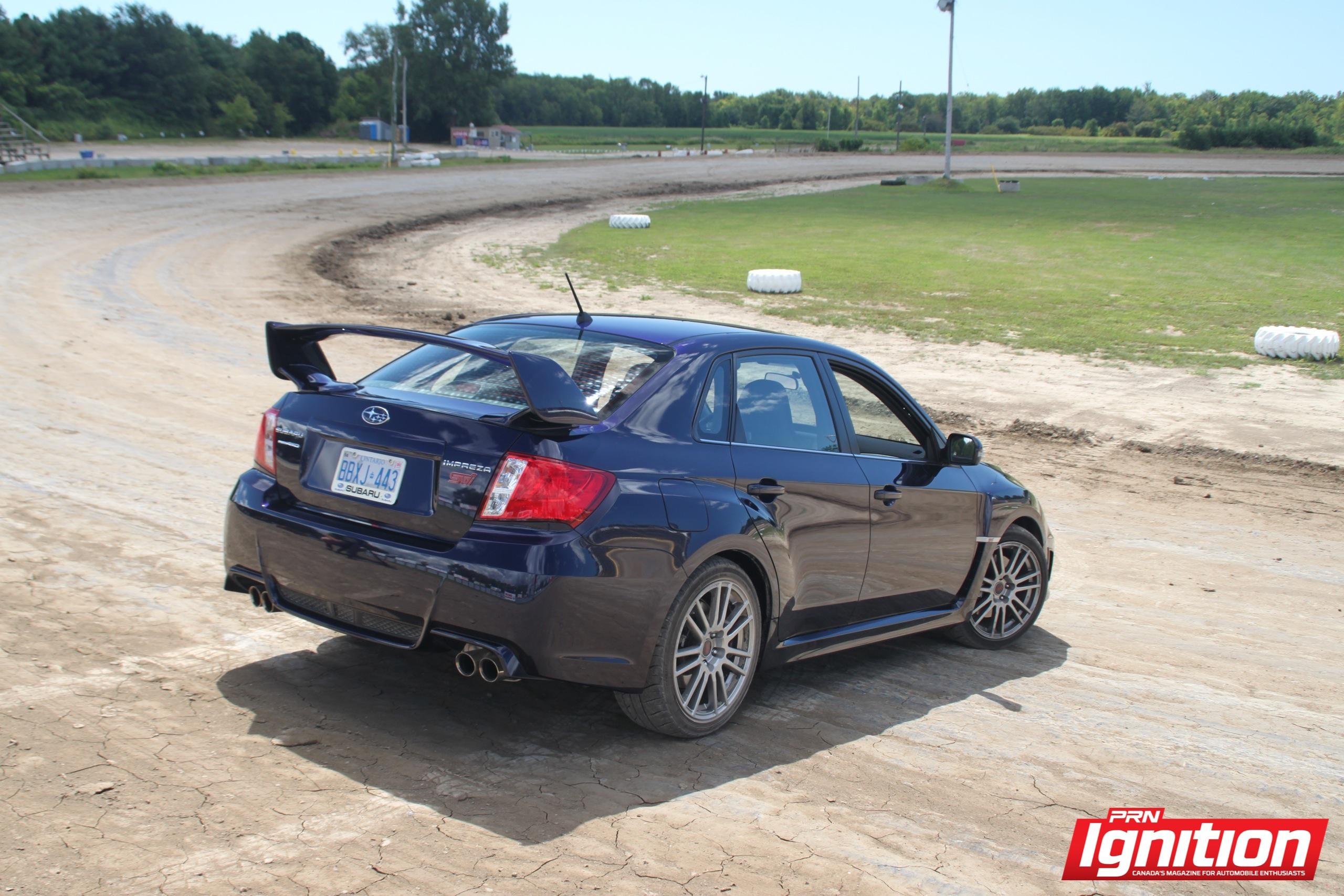
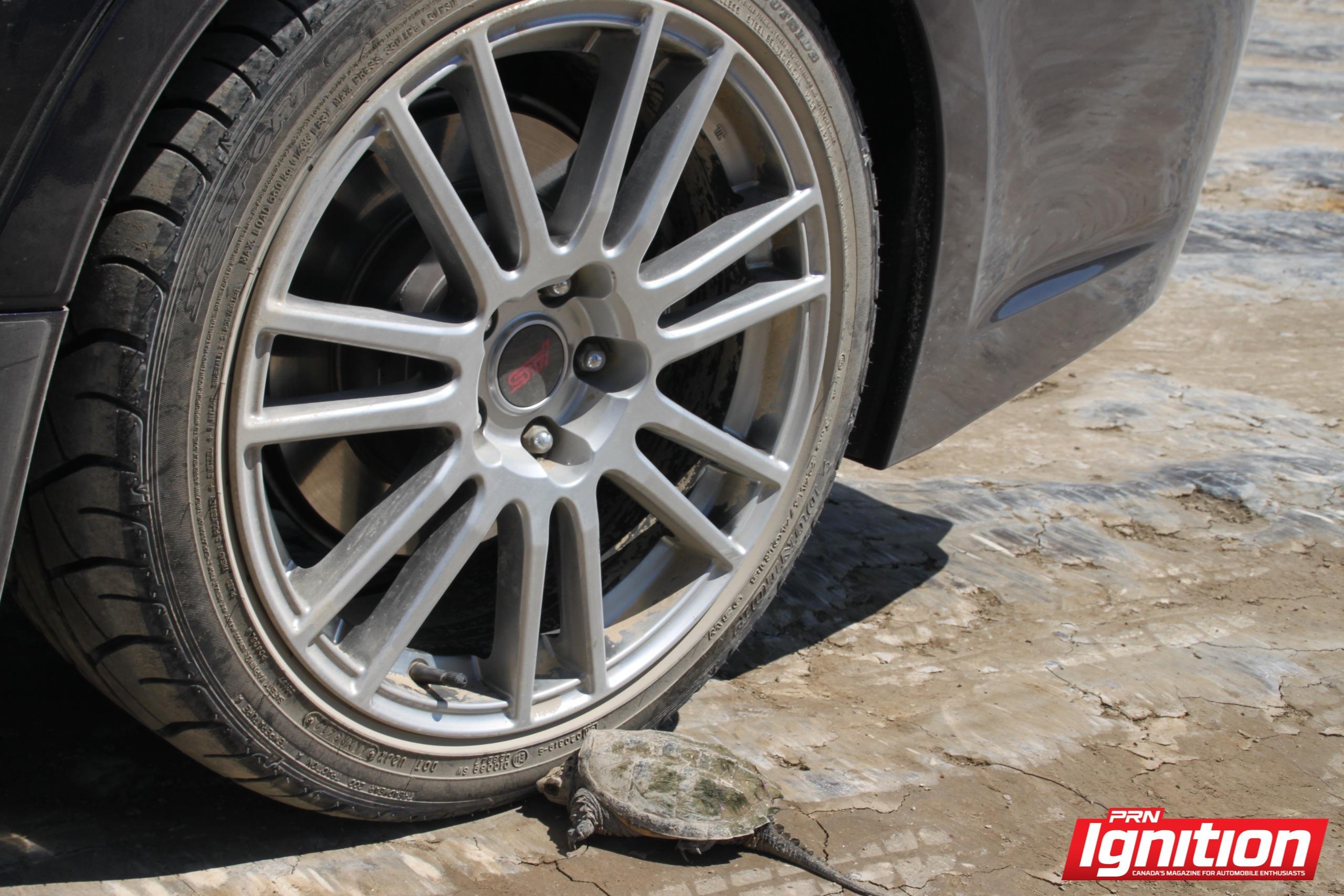
To enjoy the rally car performance, one must utilize SI-Drive to maximize the engine's performance, control and efficiency. Three modes are available: intelligent (I), sport (S) and sport sharp (S#), each of which changes the character of the engine.
As for the DCCD, there are two modes. In auto mode, the system automatically adjusts the initial LSD torque by estimating the driving and road conditions using signals from a myriad of sensors, including wheel speed, throttle position, steering angle, brake switch, yaw and others.
The default auto mode is suitable for most driving situations while auto[+] mode emphasizes traction control and strengthens the differential action for driving on slippery roads and for vehicle stability. Auto[-] mode is suitable when you want quick response from the steering wheel and smooth driving. In manual mode, the driver can set the initial LSD torque to whatever is best suited for the conditions and/or to get the desired performance from the car.
To test out these systems, I head to the Brighton Speedway, home of the Southern Ontario Sprints and World of Outlaws, where the owners have been kind enough to let me to push this car to its limits on their 1/3-mile clay dirt oval. The well-manicured surface is not as soft and pillowy as I'd been expecting however. In fact, the previous evening's sprint race has left it hard-packed and ingrained with tire rubber that makes it quite tacky.
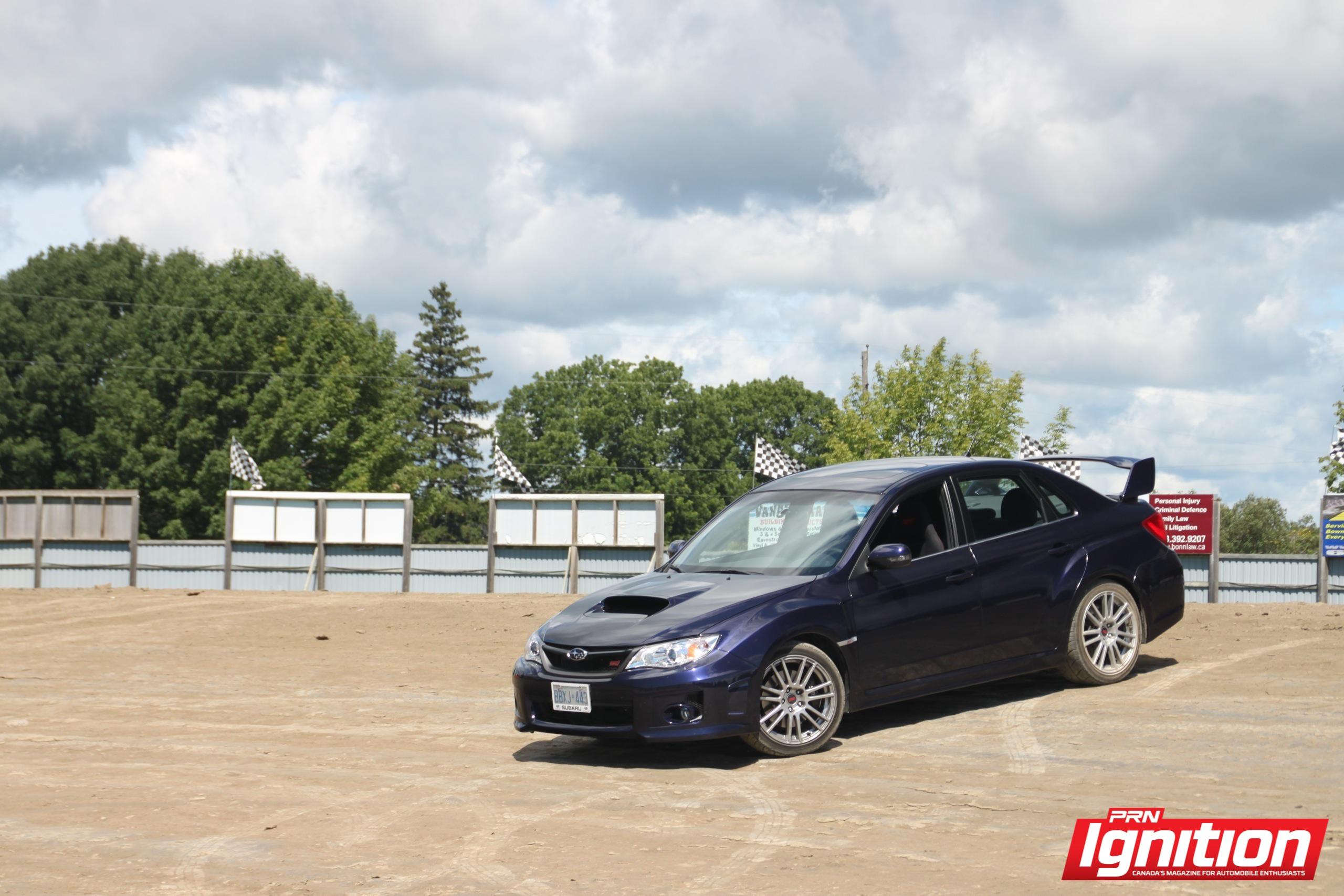
In order to get the STI to do what I want it to – that is, to make drift it like a rally or gymkhana superstar – some computer tweaks are in order.
The first order of business is to turn off the traction control system completely, which is accomplished by holding its button down for five seconds. The corresponding light on the dash turns yellow to indicate it's off and, after trying out various combinations of SI-Drive and DCCD settings over the course of several laps to try and eliminate the understeer, I find the sweet spot.
By default, the DCCD splits power 50/50 front to rear. Pulling on the handbrake causes the rear diff to disengage, and sends 100% of the power to the front. Releasing it quickly sends the power back to the rear wheels, making it easy to initiate and maintain a drift.
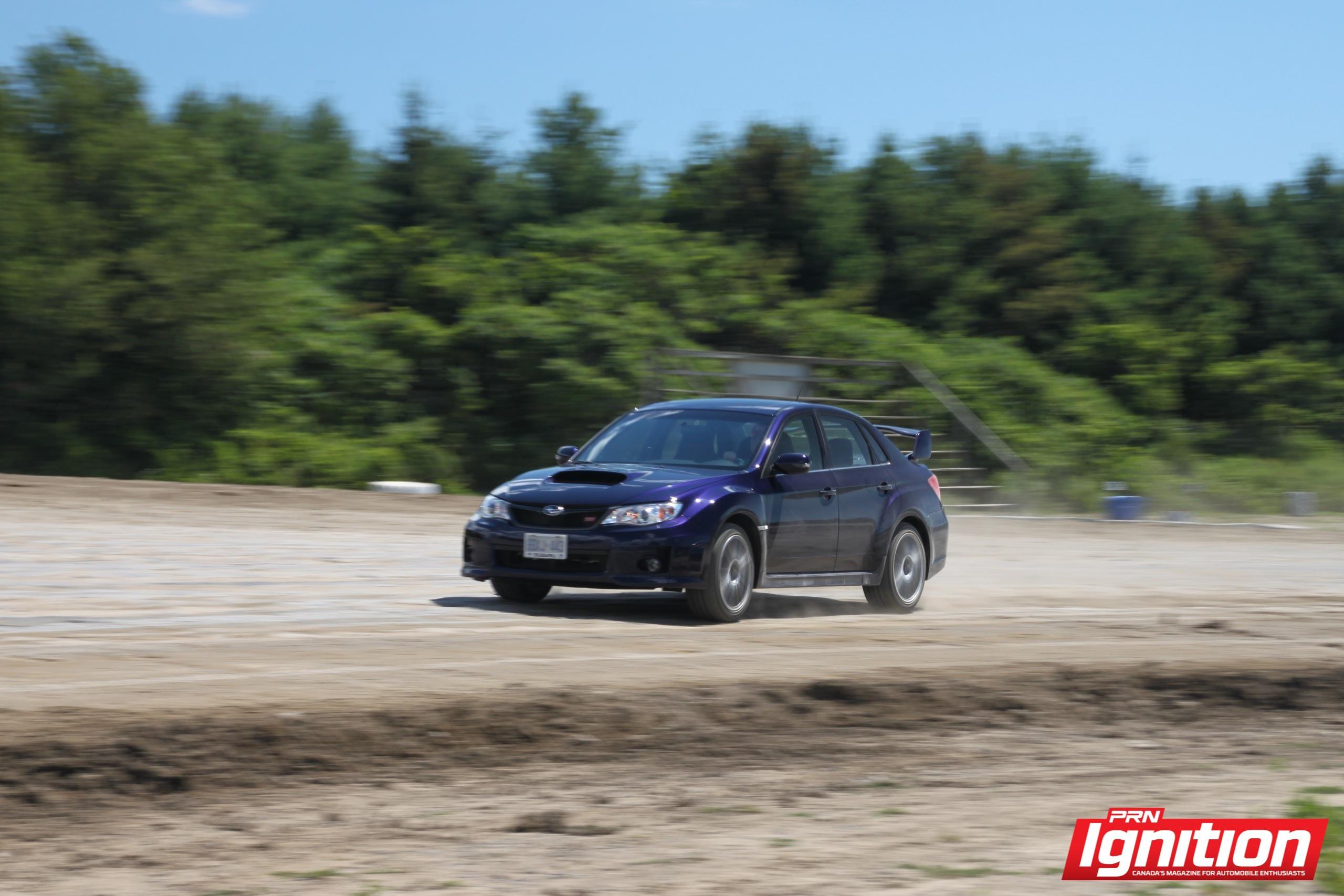
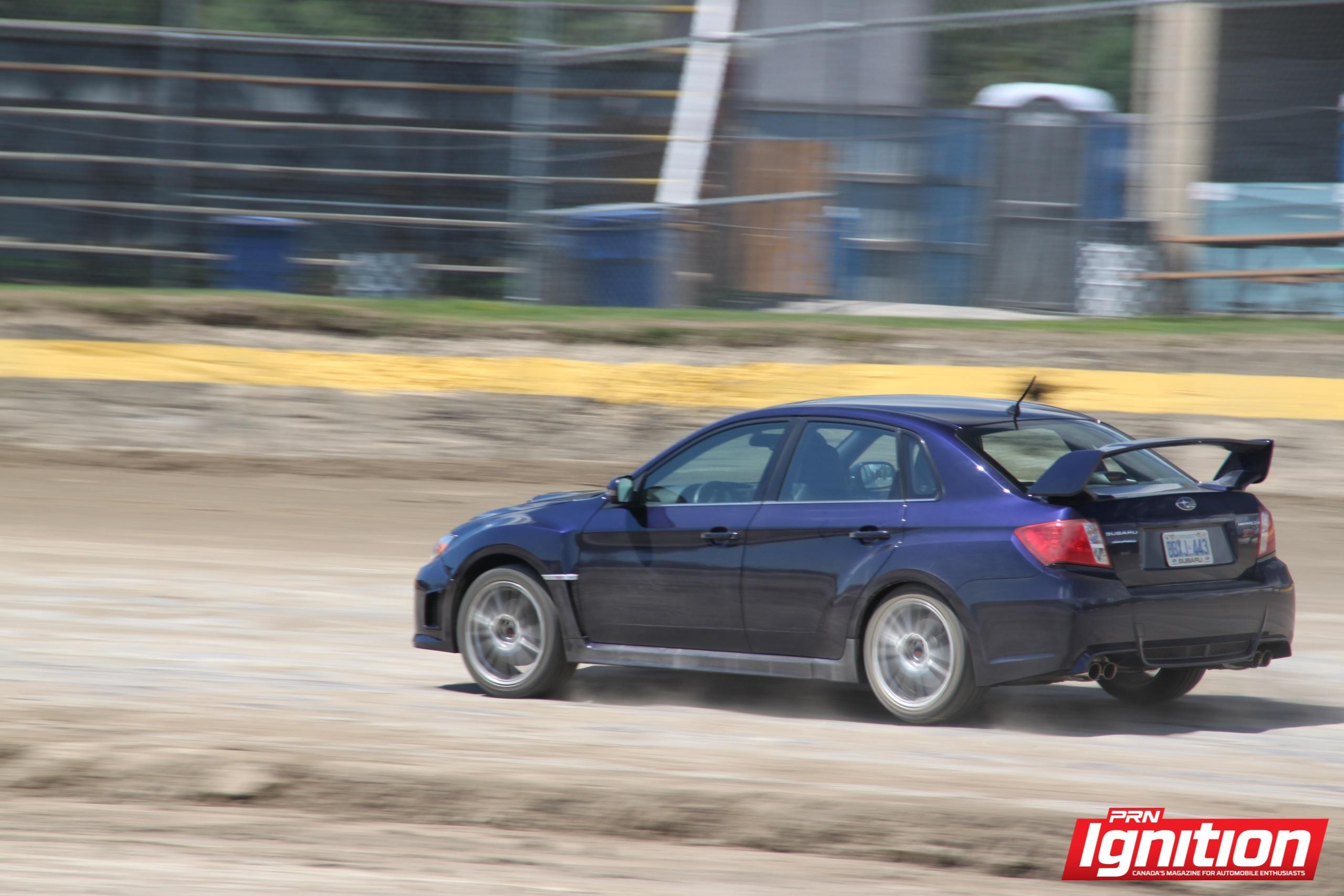
You can also do it the hard way. With SI-Drive set to Sport# and the centre differential in manual mode with the bias set all the way to the rear (this sends 30% of the power to the front and the remaining 70 to the rear wheels), I circle the track in second gear to keep the revs up. The car is still understeering, but if I pitch it hard enough into the corners (a.k.a. Scandinavian flick or feint entry), I'm able to find that perfect yaw moment and maintain drift for the entire course at around 80 km/h.
The car feels light (practically weightless) as it powerslides around the sticky oval almost completely sideways. I'm looking at the next turn-in point with neutral steering and modulating the throttle to maintain drift on the short straights.
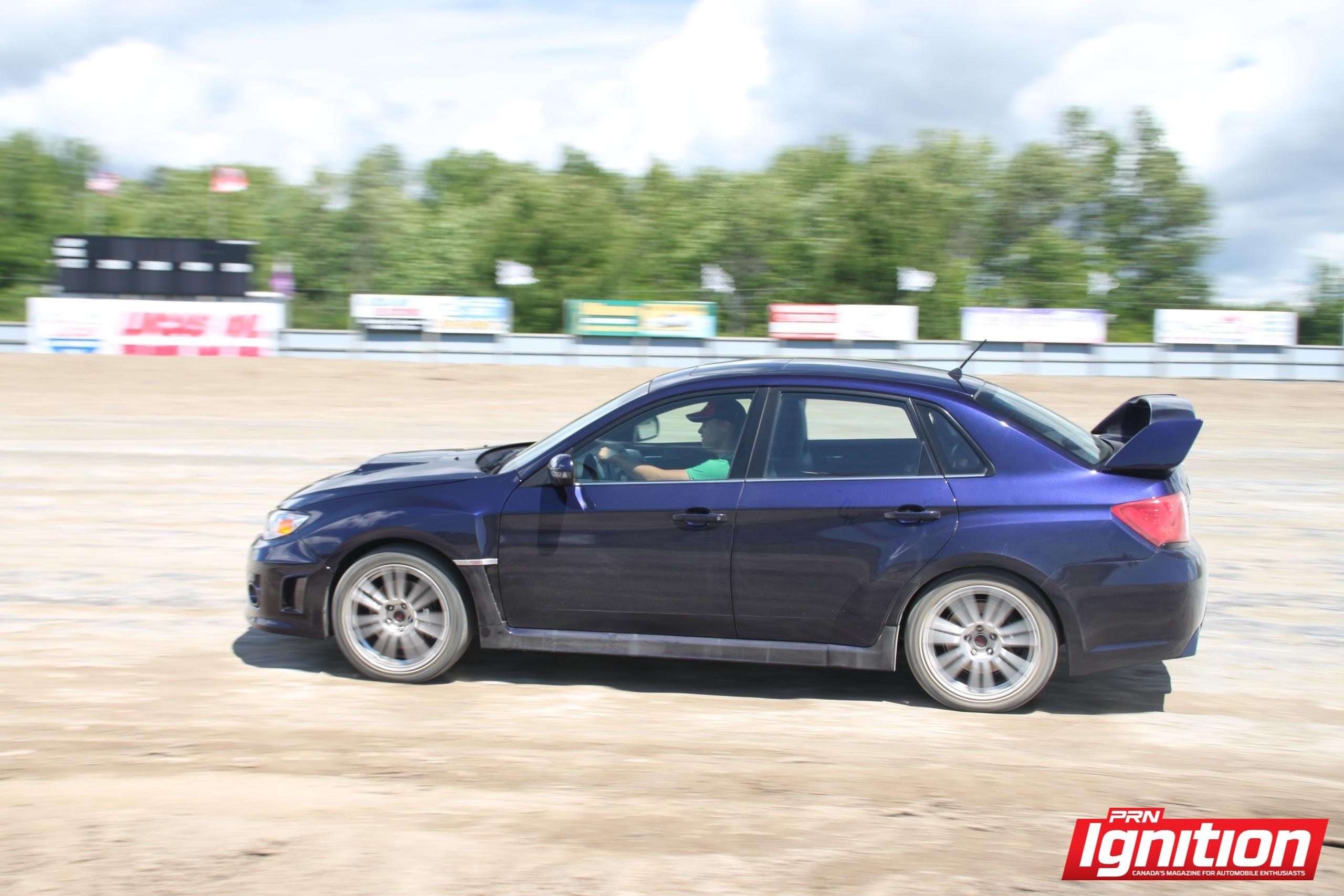
While this would have been a lot easier on cottage roads covered with loose dirt, gravel or on a soaking-wet skid pad, the fact I'm able to make do this on what is basically the equivalent of sandpaper or Velcro speaks volumes to the effectiveness of these systems.
Most people will never use the car in this way, but it can be custom-tailored to do whatever you want it to. And that, my friends, is what makes the STI so impressive. Don't change a thing Subaru!
2013 Subaru WRX STI Sport-Tech Package
Base Price: $38,195
Price as Tested (before taxes): $41,695
Engine: Turbocharged 2.5L 4-cyl. Boxer
Horsepower / Torque: 305 hp / 290 lb-ft
Configuration: FA
Transmission: 6-speed manual
Fuel Economy Ratings (city / hwy.): 12.6 / 8.8 L/100 km
Observed Fuel Economy: 13.7 km (over 536.3 km, including track time)
Warranty (mos / km): 36 / 60,000
Additional charges: Destination and delivery ($1,595).




















